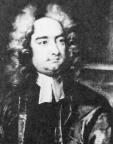The rugged eastern mountain ranges of Queensland, extending from the Lamington Plateau and
MacPherson Range of the south-eastern border country all the way up to Australia’s northernmost
point, Cape York, still contain many vast regions of inaccessible forest country seldom, if ever visited
by man.
It is from these imposing rainforest-covered peaks and deep valleys that eerie stories of
mysterious hairy man-like giants and pygmy folk have been emerging since the earliest years of
European settlement in the 19th century. And these traditions are by no means confined to the east
coastal and far northern mountain ranges for even in modern times people are reporting encounters
with primitive hominids in remote out-of-the-way regions of the Central Queensland interior.
To the old costal Aboriginal tribes and also those of the interior, the land was inhabited by a
host of hairy manbeasts. In the far west of the state, Aborigines feared the Pankalanka people, the firemaking
giants who delighted in roasting and eating Aborigines, while tribes from the gulf country to the
Atherton-Cape York wilds lived in equal terror of the Turramulli manbeasts and the slightly smaller ‘neo-giant’ Imjim creatures.
Further south to the border ranges of the Lamington and MacPherson country the tribes
believed the forests were inhabited by the ‘Wolumbin’ and ‘Widgee’ giants. To further confuse matters
the Cape York Aboriginal people feared the ‘Wirri Wirri’, a dwarf race whose men had pointed beards
and carried spears barbed with snakes fangs, one prick from which meant death. There were also the ‘Junjdy’, the “little hairy red men”.
Obviously four races are involved. The features of the Pankalanka people [average 2.6-3m in
height] resemble the Bulloo, Goolagah and Jogungs known to the traditions of the Aboriginal people of
western and eastern New South Wales; whereas the Turramulli resemble the Gigantopithecus-like
Jimbra, the terrifying ape-like monsters of old Western Australian Aboriginal lore.
The Imjim of Far North Queensland and Widgee of the southern border country were a
primitive race of Homo erectus features, whereas the little Wirri Wirri and Junjdy hominids were one
and the same people, ie the Negrito Aborigines of the North Queensland rainforests.
The ‘hairy people’ of the remote Queensland wilds were regarded as no mere myths by our
early pioneer settlers, and tales told to them by Aborigines were taken quite seriously.
The authors have gathered a great many accounts from throughout Queensland dating back at
least to the mid-19th century. From our findings there is no doubt that the bulk of reports come from
the eastern mountain ranges and forested coastal areas, particularly in the far north. It is to the eastern
wilds that we shall concentrate our attention as with the previous chapter.
The reader will have noticed by now that there were many different names for the ‘hairy people’
besides the word ‘Yowie’. This name was principally employed by the Aboriginal peoples of the New
South Wales south coast region approximately as far as the Wollongong district, northwards to the
Newcastle/Hunter and Taree districts and inland across the Blue Mountains into the central west.
Yet
there were many other names Australia-wide and the reader can pursue this aspect at greater length in
our book “Giants from the Dreamtime – The Yowie in Myth and Reality”. Names for the ‘hairy men
and women’ varied with the different tribal dialects but all had the same basic meaning, ie “Hairy Man”.
Apart from the tribal names used in the chapters concerned with past and present-day sightings and
close encounter claims, this book is largely concerned with the origins of the Yowie, the fossil evidence
revealing ‘his’ Homo erectus origins and other scientific aspects virtually missing from the literature of
our plagiarist rivals dealt with in this book.
The name ‘Yowie’ is used by the media and has been ever since they ‘discovered’ it from my
press interviews back in the early 1970s. I use the name for convenience only where necessary. One hears the name used commonly by eyewitnesses and whenever I am interviewing anyone who has an experience to report, I have never failed to relate a short history of these hominids to the eyewitness and wherever possible I tell them the local Aboriginal name of these beings.
Rex Gilroy
Australian Yowie Research Centre,
Katoomba, NSW
Monday 25th June 2007






